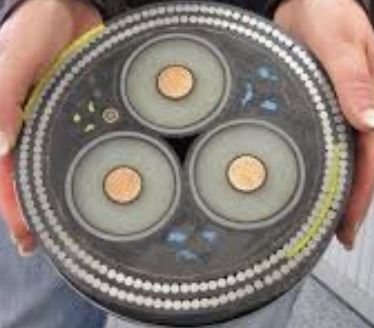 On Nov. 18, hours after two communication cables were severed in the Baltic Sea, 30 NATO vessels and 4,000 military staff took to the same body of water for one of northern Europe's largest naval exercises. The 12-day 'Freezing Winds' drill was part of a push to step up the transatlantic defence alliance's protection of infrastructure in waters that carry 15% of global shipping traffic and are seen as increasingly vulnerable to attack.
On Nov. 18, hours after two communication cables were severed in the Baltic Sea, 30 NATO vessels and 4,000 military staff took to the same body of water for one of northern Europe's largest naval exercises. The 12-day 'Freezing Winds' drill was part of a push to step up the transatlantic defence alliance's protection of infrastructure in waters that carry 15% of global shipping traffic and are seen as increasingly vulnerable to attack.
The Baltic Sea is bordered by eight NATO countries and Russia. There have been at least three incidents of possible sabotage to the 40-odd telecommunication cables and critical gas pipelines that run along its relatively shallow seabed since 2022.
"NATO is stepping up patrols, ... allies are investing in innovative technologies that can help better secure these assets," said Commander Arlo Abrahamson, a spokesperson for NATO's Allied Maritime Command.
NATO is repurposing its six-vessel minehunting fleet to also monitor suspicious underwater activity, with its hull-mounted sonar scanning the seabed, drones able to take pictures and video under the water, and specialist divers on hand. But its powers are still limited, according to Reuters.
Security sources say the Chinese bulk carrier Yi Peng 3, which left the Russian port of Ust-Luga on Nov. 15, was responsible for severing the two undersea cables in Swedish economic waters between Nov. 17 and 18 by dragging its anchor on the seabed. As of Monday, it was stationary in Danish economic waters, being watched by NATO members' naval ships, having been urged by Sweden to return to be investigated.
NATO in May opened its Maritime Centre for Security of Critical Undersea Infrastructure (CUI) in London, which wants to map all critical infrastructure in NATO-controlled waters and identify weak spots. In Rostock, on Germany's Baltic coast, a multinational naval headquarters opened in October to protect NATO members' interests in the sea.
NATO's Centre for Maritime Research and Experimentation in Italy is launching software that will combine private and military data and imagery from hydrophones, radars, satellites, vessels' Automatic Identification System (AIS) and fibres with Distributed Acoustic Sensing (DAS), which private telecom companies use to localise cuts in their cables.



